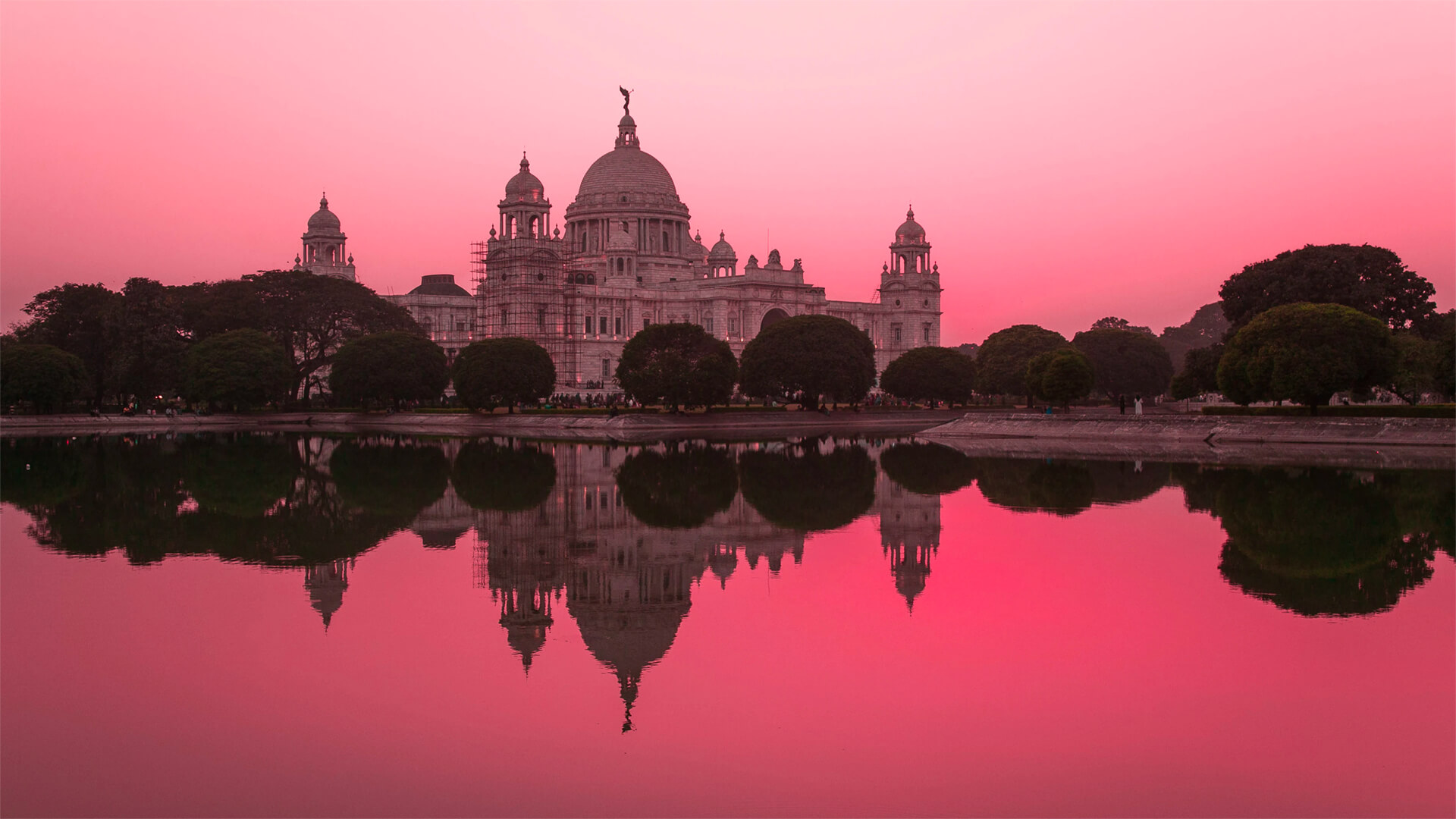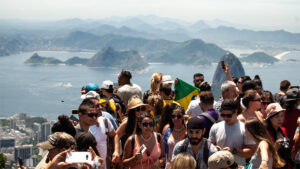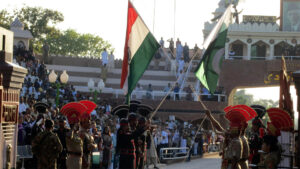Note from Peter: I’ve been doing some version of geopolitical analysis for two decades now and I like to think I’m pretty good at it. However, the world is a very big place and by definition being aware of all of it means being a specialist in none of it. Simply keeping my up to date requires having multiple minds to absorb and sift and make sense of a thousand different things a day. The mind I most rely on to help me with all of that is our Director of Analysis, Michael N. Nayebi-Oskoui. Considering the utter lack of levity in the topic of the day we are doing our best to limit my natural sarcasm and Michael’s gallows humor.
As governments in Washington, DC and London and Paris took their time to push their respective populations to shelter in place, the novel coronavirus did what it does best: spread quickly and efficiently through dense populations, the sort of dense communities that define the US Atlantic coast and most of Northwestern Europe.
These populations are not simply dense, they are aged. The American Northeast has the greatest proportion of its population in the retiree bracket. Western Europe holds a similar title on a global stage (only Japan has a greater percentage of elderly). Density plus lots and lots of older folks will overrun the capacities of local hospital networks. About the only bright spot is that these areas have the world’s best hospital systems, which (hopefully) will take some of the bite out of the sorts of scenarios we have seen unfold in Italy and Spain. Less severe but heartbreaking, nonetheless.
Those of us lucky enough to be able to work from home (and here I, Michael, count myself) are among the millions of workers throughout the rich world making use of technological breakthroughs like web-conferencing and the Internet. Don’t take the last one for granted—huge swathes of the global economy, hugely vital portions, cannot be aided by what we consider to be commonplace tools.
Workers in orchards and fields (particularly those picking fruits and vegetables by hand) cannot telecommute. The computers, phones, webcams et al so many of us use to work from home cannot be made via Zoom. An entire vulnerable, global economy undergirds our morning coffee, the pajamas we may or may not work in, the tech we use to telecommute.
And so, we turn our focus to where the COVID-19 pandemic faces different levels of response and attention than what we have in the developed world.
India is the world’s largest democracy and second-most populous country. The Ganges River basin that spreads across northern India is one of most fertile—and thereby most densely populated—agricultural regions on Earth. As Herculean as China’s efforts to quarantine Hubei province and Wuhan were, New Delhi is attempting something much more difficult: to keep over 1.3 billion people socially isolated in the largest quarantine effort ever undertaken by any government.
It would be difficult for any society, but India is not like New York City. It is a land where communal marketplaces, farming, and social interactions form the backbone of the economy. India’s urban conglomerations are not only populous but crowded: Indian railways and roadways and walkways are among the most congested in human history.
India isn’t simply one of the purest democratic societies in the world, the scale of its democracy is difficult to grasp, and that scale is part of the problem. More voters participated in the 2019 Indian general election in just the two states of Uttar Pradesh and West Bengal than the entirety of the United States in its 2016 presidential vote. Before worries over COVID-19 kept people home, the Modi government’s attempts at limiting citizenship to non-Muslim refugees saw massive protests—including over 100,000 people in Hyderabad—all over the country. Given the nature of India’s infrastructure, even relatively small protests and sit-ins can significantly disrupt development plans and supply chains, including South Korean metal giant POSCO’s planned $12 billion steel plant in Odisha that was successfully delayed for nearly a decade (POSCO has since decided to operate elsewhere in India).
That’s wonderful for democracy, but horrible for epidemiology. The very governance of India makes a uniform disease prevention program nigh impossible, and the liveliness of Indian democracy at the provincial and local level makes imposing any sort of long-term quarantine (and associated economic downturn) political suicide. Try and restrict peoples’ movements livelihoods for too long and you’ll get your ass voted out of power. Or face down angry mobs. Or both.
All of which helps coronavirus spread.
The picture on the economic front a similar mix of lively and concerning. The Indian economy is an ever-moving webwork of local communities and informal, often cash-based transactions. Millions of IT jobs in the US are dependent on counterparts in India, from the financial modelling of Wall Street investment banks and Manhattan consulting firms to everyday tech and customer support. On the American side it seems to all be magically on the other side of a fiberoptic cable. But on the Indian side, it is an interlocking system of labor-heavy, largely in-person, interactions. India’s professional classes, and especially its call center workers, do not have the ubiquitous access to electricity and internet access at home of Western workers. Most must gather in the office to do what they do.
And that’s the “first world” part of the Indian economy. Porters, small business owners, chaat vendors, chaiwallahs, agricultural workers, artisans—the full breadth and depth of India’s vibrant economy cannot realistically sequester. And for those that do, consider that India’s average household size (4.8, but let’s call it 5) is larger than that of many countries—Iran’s is 3.5, and the US’ is 2.6—with the number rising as you go down the socioeconomic scale, and a higher cultural proclivity toward multigenerational households.
Which brings us to the necessity and hopelessness of the federal government’s intervention. A month ago, the government of Narendra Modi boasted that India only suffered of a scant handful of COVID-19 cases. Officials eagerly pointed out that most were linked to Italy (the de facto leader of the opposition Indian National Congress party, Sonia Gandhi, was originally an Italian citizen) with fatalities in the single digits. Now the same government quietly admits that its inability to test for the virus within its population did nothing to slow the virus’ spread through that same population. And as the Americans have discovered, if testing is insufficient, the only option to avoid mass deaths is a complete lockdown.
A lockdown that in India’s crowded political and economic spaces is probably not possible.
And then there is the issue of health. India suffers from startingly high rates of diabetes and heart disease, significant risk factors for COVID-19 patients at all age groups. India’s population ranks among the highest in the world with respiratory issues, including the highest rate of tuberculosis in the G20. (Most tuberculosis suffers do not realize they host the bacillus until another condition such as coronavirus weakens their immune system, at which point it boils to the forefront.) India’s major cities are heavily polluted—New Delhi left Beijing, Mexico City, and Tehran in the dust (smog?) years ago.
India also has a long history of a relatively weak central government in the face of powerful state and local governments; if you think competition for resources among US states is a nightmare, just wait. India’s mix of exclusionary private and overcrowded public hospital networks makes coordinating a response difficult, and with an adherence to a code of law that shifts from neighborhood to city to region to state, enforcement of quarantine, state mandates, etc. will be a nightmare. India’s response to the COVID-19 crisis and its success will not be uniform across the country. The Mumbai-New Delhi corridor is the wealthiest and best equipped, especially the private medical facilities utilized by India’s upper middle classy and wealthy. Chennai and Bengaluru have shown marked success in restoring essential services under the current lockdown. But the more rural areas of Uttar Pradesh, places distant from the Centre’s focus such as Nagaland, and relatively new governments like Telangana’s will be hard-pressed to respond effectively.
We should be clear here: any government tasked with keeping a tropical nation of 1.3 billion densely packed people safe and healthy would face an uphill battle on the best of days. Take pot shots at India for its woefully late start if you must, but to New Delhi’s credit the government is absolutely doing what it can now.
Which means that India could not be more different than Brazil. Say what you want about Brazilian President Jair Bolsonaro—for instance, that he’s a homophobic, Fascist-sympathizing, anti-Semitic, anti-globalist, expertise-dismissing, xenophobe who holds vast swathes of his own country in utter disdain, while making America’s Donald Trump and Hungary’s Viktor Orban look like hippy pansies (his supporters see these as his good points)—but his extreme COVID-19 denial has evolved from being confusing and worrisome to borderline genocidal.
Bolsonaro not only continues to reject calls for nationwide measures to stem the spread of disease, he actively agitates against governors and mayors trying to enact social distancing on the regional and local levels. Even worse, Bolsonaro continues to lead mass rallies with he presses the flesh with thousands of supporters, even after many in his immediate circle have tested positive for coronavirus. Bolsonaro may well be the world’s best known “super-spreader”.
That’s the current political disaster. Here’s the coming health disaster:
Every major Brazilian city has a ring of slums, the infamous favelas, nearly all of which are more densely populated than Manhattan, but utterly lacking high-rises. These shanty towns-turned communities suffer high degrees of lawlessness paired with an autonomy resulting from the simple fact that more affluent Brazilians want to keep them out of sight and mind. All now have local economies and services unto themselves, typically independent of whatever urban governments they should at least nominally be linked to. While formal statistics are hard to come by, Brazil’s 2010 census indicates that over 11 million people – roughly 6% — of Brazil’s population lives in one. That provides Brazil with deep and ongoing issues of economic inequality, educational disparity, racial divides and…health challenges.
Add in minimal coordinated testing (remember, President Bolsonaro thinks it’s a hoax), an over-extended and underfunded health sector, and densely populated urban cores, and managing the impacts of COVID-19 in Brazil, like in India, is going to be a nightmare.
And these are the trillion-dollar economies.
Elsewhere in the world, we are looking for where the witch’s brew of very dense population centers, minimal internal testing relative to population size, weak health infrastructures, and populations with a high percentage of pre-existing health conditions all meet. In addition to India and Brazil, Egypt, Bangladesh, Yemen, Pakistan, Iraq, South Africa, the Philippines, Algeria, Nigeria, the Persian Gulf states, and Russia all make the list. Low levels of national spending on health, frequent bouts of political and social unrest, large migrant and refugee populations, and governments more interested about quelling panic than testing, tracking and isolating coronavirus patients is a recipe for disaster. Russia, in particular, seems intent on following Brazil’s lead.
Which is not to say governments aren’t doing anything.
South Africa is attempting to institute a national lockdown a la India, but outside of a few elite neighborhoods in the cities, most of the country’s health infrastructure is crumbling. And that’s the areas with any hospitals and clinics at all. The densely populated townships have little to nothing in way of permanent healthcare facilities, in addition to suffering high rates of unemployment and lifestyle diseases. Such townships are 40% of the South African population. Another 20% live in shanty towns which are even worse. From 2009 to 2017 the country was ruled by the corrupt thugocracy of Jacob Zuma, and for most of the century before that, Apartheid. Incumbent President Cyril Ramaphosa faced an epically difficult task in unwinding a system that either deliberately denied services to or sought to rob most of its population, even before coronavirus barred its fangs.
If you’re looking at the above criteria and thinking the wealthy Arab Gulf states, with well-funded social safety nets and huge spending on health, are the odd ones out: yes and no. Most of the populations of the Gulf states live in small, dense cities along the coast—frequently in high-rises or other multi-family units. It’s a society built around inside activities—shopping malls, movie theaters (where allowed), playground and indoor amusement parks. Lots of central air conditioning, and staggeringly high rates of diabetes, obesity, heart disease, smoking and generally poor cardiovascular health. It’s a ticking time-bomb, and not just because of the proximity to the ongoing failure of the Iranian government’s handling of its COVID-19 crisis. Think of these communities as so many cruise ships, just sitting in one place.
The cruise ship comparison is not one we make lightly.
A cruise ship is a series of cabins linked by central air systems which recirculate what everyone is inhaling and exhaling. In medical terms, it is a petri dish, ergo why cruise ships generate ever-rising numbers of coronavirus infections. Something along those lines is undoubtedly brewing in the vast living quarters throughout Doha, Dubai and Abu Dhabi. (Incidentally, America’s aircraft carriers are proving to be nearly as problematic as cruise ships, but without the bar.)
Living in the advanced world it is often easy to dismiss issues in the developing world as a problem for another country, even another hemisphere. It is not. The coronavirus emerged in interior China where the developed and developing world’s rub shoulders. It crossed the line just fine. It can, and will, do so again.
And now the pitch: India and Brazil and South Africa and the rest are deeply enmeshed in the ebb and flow of the global economy. Join Peter Zeihan for ZoG’s second videoconference, the Unmaking of the Global Economy, and explore the role the developing world plays in keeping the global system working, and how coronavirus will burn away the ties that bind.








